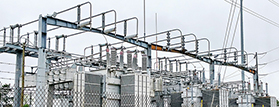Renewable energy is something that has been discussed for a long time, but will America ever be able to fully embrace it? While it may seem that transitioning away from fossil fuels has been happening at a snail’s pace, the good news is, things are changing for the better.
Where Does the United States Get Its Energy?
The United States currently relies on a mix of various energy sources, including renewable energy and the old stand-by, fossil fuels. Primary energy sources are those types of energy that in essence allow us to create “usable” energy, known as secondary energy.
Electricity is actually a secondary energy source garnered from other energy sources like oil, nuclear energy and solar power. (If we were to someday harness lightning, then electricity could become a “primary” energy source, but the current technology is just not there yet.)
As of 2020, here is the breakdown of energy sources leveraged in the United States:
· Petroleum: 35%
· Natural gas: 34%
· Nuclear electric power: 9%
· Renewable energy: 12%
· Coal: 10%
Here’s how renewable energy sources break down:
· Wind: 26%
· Hydroelectric: 22%
· Wood: 18%
· Biofuels: 17%
· Solar: 11%
· Biomass waste: 4%
· Geothermal: 2%
Thus, wind is responsible for 26% of the 12% total of renewable energy utilized by the United States. You’ll note that ‚Äúwood,‚Äù which is not typically considered a ‚Äúrenewable energy source,‚Äù is also in this list. Solar power is actually quite low on the list at 11% of renewable energy, making it only a small portion of the energy generated in the United States as a whole.
As you can see, we’re still quite a far way away from renewable energy becoming the main fuel source in the United States.
The Future of Solar Energy in North America
The good news is, with aggressive action, solar power can dramatically move forward as a leading energy source in the United States. The U.S. Department of Energy estimates that solar energy could become 40% of the nation’s electricity source as early as 2035, less than 15 years away. That number could potentially increase to 45% or more by 2050.
Solar energy is cheap and can significantly help carbon emissions. No greenhouse gases are emitted while solar power is being generated, however, there may be some environmental impact in the initial creation of solar power systems.
Photovoltaics (PV) such as solar panels are popular and can be easily installed in a variety of locations, including on the roofs of homeowners, who can potentially sell energy back to utility companies when in excess. But we can also expect an increase in centralized solar power plants using technologies such as reflecting mirrors as well as solar heating and cooling (SHC) systems.
The Future of Natural Gas in North America
With the commitment to renewables, is there any future for non-renewable sources of energy such as natural gas? Natural gas can be a polarizing issue, according to McKinsey & Company, highlighting the odd juxtaposition of new discoveries and technologies providing ample liquefied natural gas (LNG) while decarbonization policies threaten the industry.
Net carbon neutral goals will put a damper on the natural gas industry, especially in states such as Hawaii, New York and California. Hawaii has an ambitious goal to be complete carbon neutral by 2045. California is gearing up to transition to at least 60 percent renewable energy by 2030, in less than 10 years.
Yet, natural gas is still a key energy source, especially in states that aren’t as focused on aggressive carbon neutral policies. While current projections by McKinsey show a leveling off of natural gas demand by 2035, gas still has an important role to play. Why?
Because gas is still a preferable alternative to coal-powered energy, and it is expected to displace coal in the medium term.
While McKinsey places gas ahead of nuclear in the long term, nuclear power is still considered to be a critical strategic energy source in the time of climate change. That said, many environmental activists have very vocal concerns about the long-term safety of nuclear energy.
What Else Is in Store for America’s Energy Future?
Energy generation is only one part of the energy equation. The other side is energy usage. On the one hand, America’s voracious appetite for energy shows no signs of slowing up. But on the positive side, more and more people are seeing the value of energy conservation. With technologies such as smart grids and more energy efficient appliances, energy consumption can hopefully be kept in check.
Electric cars will be an important part of the transition to renewables, so expect to see electric car infrastructure built out significantly in the next two years.
Townsend Tree helps utilities and pipeline companies keep energy flowing safely with services such as tree trimming, line clearing and hazardous tree removal. Contact us to find out more about how we can help you provide continuous electrical service to your customers.
